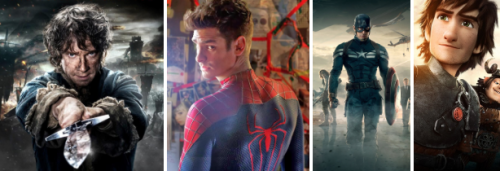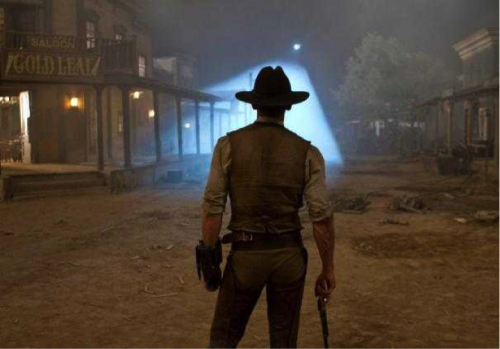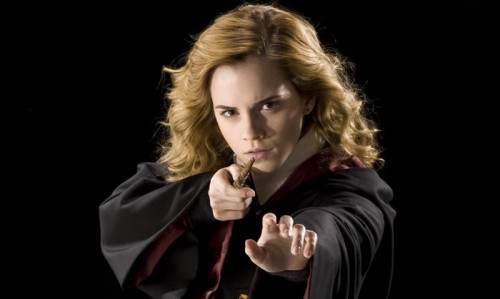This guest post by Morgan Faust appears as part of our theme week on Masculinity.
I had a professor who began our first writing class with a wonderful speech about how as writers we have the most important job in the world since we create the myths that inform and mold society and its expectations of itself. Granted, his job was to convince us grad school was worth $40,000 a year….but the idea that narratives have real power did stay with me (so I guess he proved his point). Our national cinema (by which I mean the big stuff that shows up in theaters and is sent out around the world) says a lot about who we, as a country, think we are.
To judge by last year’s overseas box office numbers, we are a nation of white boys and men who fight imaginary baddies…oh and Angelina Jolie. There are many things we could tease out about America’s self-assumed national identity from our cinematic persona with regard to race, heteronormativity, military prowess, but this is Bitch Flicks and the topic is masculinity, so for today, let’s stick to that. Notably, in those top ten movies we have (often in the form of a sequel, triquel, and I don’t even know where to begin counting the X-Men movies) the story of a scrawny, nerdy, outcast boy who goes on a journey and becomes the hero he was meant to be. This story is known to its friends as the monomyth. So what does this myth say about us? A whole heck of a lot! So come with me, oh humble reader, and you will be transformed!

A fantastic, recent example of our everyman hero, monomyth affinity is The Lego Movie. This story has all the notes of the humble hero myth: the hero Emmet, a good-hearted nobody who is chosen by a higher power, Vitruvius, to be the “special,” is then supported by a team of talented people–Wild Style, Batman, and Unikitty–to try and conquer evil Mr. Business. He eventually discovers he had the power to defeat the big bad in him all along! (Sound familiar, Bilbo? Mr. Potter?) Lord and Miller know their stuff. They play craftily with the myth; it’s story structure (ultimately our characters are actually Legos, not people, and they represent the feelings of the boy that is playing with them. Therapists would have loved working with this kid). It has a great message about play and finding your own voice, and says we can all be heroes! Especially boys! Oh, right. While the message of the movie might be about everyone, the story is about an everyman. I am reminded of the Declaration of Independence: “We hold these truths to be self-evident, that all men are created equal.” It represents all people, but it definitely says men.

So let’s dig into the component parts here. We have Emmet who is a good guy, friendly, upbeat, hardworking but unappreciated by his peers (calling Steve Rogers). All of these are traits you choose to have, rather than are born with, which fits in perfectly with the Alger Hiss American Dream we hold so dear: we are not a nation of fated success stories, we are individuals formed by our choices. Monomyth heroes are often orphans, or at the very least unloved by their parents, so they are truly, self-made men. How to Train Your Dragon’s Hiccup is small, hardworking and big-hearted. Harry Potter, even though put upon by awful relatives, was still generally a good kid who tried his best. And Luke was, well let’s be honest, he was a brat, but he was supposed to be a good-hearted, ambitious kid, who wanted to get out and see the world. This is a particular vision of masculinity; it’s not the “right man for the job” skill set of Indiana Jones, Hercules, or James Bond, instead, these are highly attainable character traits.
For all these boys/men, at some point early in the story, someone or thing plucks them from their mundane existence to send them on their path to greatness. The Lego Movie has fun with this conceit by getting a bit meta and literally calling him “the special,” but it is still the familiar notion that through no action of his own, Emmet is lifted up and named the one person who can save the world; and while he doesn’t see it about himself yet, the powers that be have faith in him that he will one day be the hero they know he can be. Which leads us nicely to the next thing a humble hero needs: his team.
In The Lego Movie this is made up a of team of Master Builders, a group of elite builders with the ability to create anything from legos, a skill that Emmet notably lacks. And while this group has their doubts about him, they never abandon him, they listen, and they follow his leadership. Each is a different variation on Emmet, and a manifestation of a skill set he doesn’t have, which in this case, as in many movies, includes a token woman (in Lego there is a token woman, and a token female crazy pony). Despite their abilities, each of these characters are included in the story only so they can help the hero find his inner strength and attain the goal of defeating evil.

Which brings us to the final piece of the monomyth: the hero had the answer inside of him all along. Whether it be the hero’s discovery that in fact he is special, like with Harry Potter (not only am I a wizard, I’m a Horcrux!), or simply that some character trait that had been deemed worthless proves vital, like with Kung Fu Panda’s Po, his love and belief in his heroes proves to be the thing all heroes need to succeed. The journey has brought the hero to a crucial juncture, and in order to defeat the big bad, our man has to come to face-to-face with his true self and embrace his identity.
What a perfect ending to an American myth: we each have greatness inside of us, no matter who we are!

And it is, it’s a great story, maybe the greatest. In fact, most religions have some version of this very idea at the core of their system (think how at the end of every yoga class the teacher ends saying Namaste or “the God within me greets the God within you”). So if this self-empowerment myth is limited only to men, what does that say about our culture? Well, we see its reflection in the XY domination of the White House. We see it again in Lily Ledbetter’s fight for equal pay. And we see it in the hiring practices of Hollywood (hey there Colin Treverrow!). We have a national love affair with underdog male success stories, a love affair that has not yet extended to women. And that is a damn shame.
But there is hope, a whole lot of it. Things are changing (Hillary!), and that myth is becoming more inclusive. On the one hand, we see that the traits our male heroes often embrace in order to defeat the big bad are becoming more traditionally feminine characteristics: kindness, generosity, self-sacrifice and teamwork. It’s not just about who’s the strongest or fiercest, it’s about love and respect for others. All good things. And we have Buffy, we have Katniss, and (coming this summer!) the return of Sarah Connor. There is a difference, however, between our female heroes and their male counterparts, and that is that they are fleshed out, full characters. They are not mirrors to reflect an improved image of the audience, they are women with families, feelings and flaws; they are people, not archetypes.

As the monomyth evolves, the question is: will it evolve to include the “everywoman” hero archetype, or will the nature of myth itself change to embrace not just the messaging of individualization, but the representation of unique stories for unique people?
Morgan Faust is writer/director who works in LA with her creative partner and brother Max Isaacson. Together they form the duo BroSis. When they aren’t writing action films with kick-ass women heroes, they’re keeping it goofy over at FunnyorDie.com. Click here to see what she means.
Twitter @morganfaust
Instagram @brosisgrams


















